3 Ways To Propagate Snake Plants
I love Sansevierias and I know I say that about a lot of plants but these spiky numbers really have a place in my heart. I grow them in the garden and in my house in both pots and in the ground
They have quite a few common names so you may know them as Snake Plants, Mother In Law Tongue, Snake’s Tongue, Bowstring Hemp Plant
Today I want to share with you 3 ways to propagate a Snake Plant.
Sansevierias grow from rhizomes which eventually root, and in my garden, they like to travel like crazy. You can also grow them from seed (if you can find it) but it’s not nearly as easy to do or as fast as these other methods. Even though these plants are native to the subtropics and the tropics, they thrive in our dry homes which lack that humidity. They make one mighty fine houseplant!
Some Of Our General Houseplant Guides For Your Reference:
- Guide To Watering Indoor Plants
- Beginner’s Guide To Repotting Plants
- 3 Ways To Successfully Fertilize Indoor Plants
- How to Clean Houseplants
- Winter Houseplant Care Guide
- Plant Humidity: How I Increase Humidity For Houseplants
- Buying Houseplants: 14 Tips For Indoor Gardening Newbies
- 11 Pet-Friendly Houseplants
Want to see how I do it? Then click on the video:
This is you need for successful Sansevieria propagation:
Soil: A nice light medium which drains well is idea. I always use an organic succulent & cactus mix but a good potting soil will do too.
Light: Make sure it’s bright but just know that direct, hot sun is not good.
Water: You don’t want to keep your cuttings or divided plants wet because they will rot out. So, lightly moist but not wet is the ticket. Propagation is best done indoors or on a covered porch so rain won’t mush them out either.
Timing: Propagation is best done in spring but summer & fall are fine too. Just avoid doing it in winter when the plants are resting.
Here are the methods to propagate sansevierias aka snake plants:
By The Rhizomes Which Spread
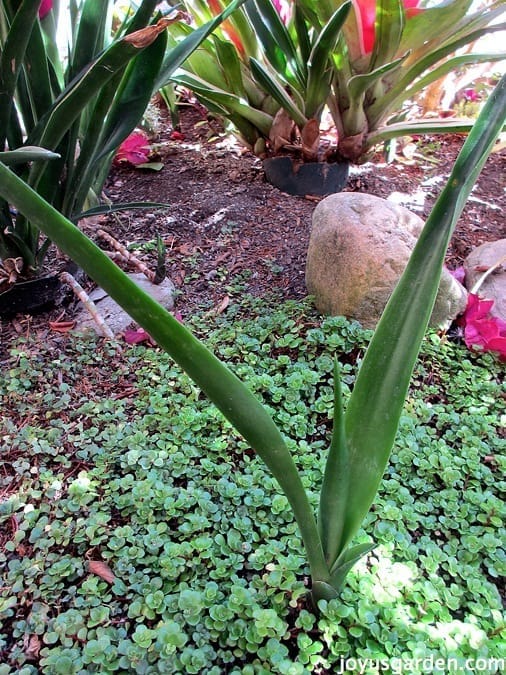
As you can see in the picture, the single Sansevieria plant in the foreground is creeping through my garden. It’s attached to the mother plant in the back by that “whiteish-grey” rhizome and there’s another smaller plant forming to the right of it. By the way, I often call them rhizomatic roots but a rhizome is actually a modified stem which grows under or very close to the ground. There, I stand corrected … by myself!
What I do is cut them off very close to the plant itself & then let the rhizome heal off for 2-3 days before I plant it. Sometimes the rhizome will have roots already formed & sometimes they’re just starting to bulge out. Use a knife or pruners to do this – just make sure whatever you’re using is clean and sharp.
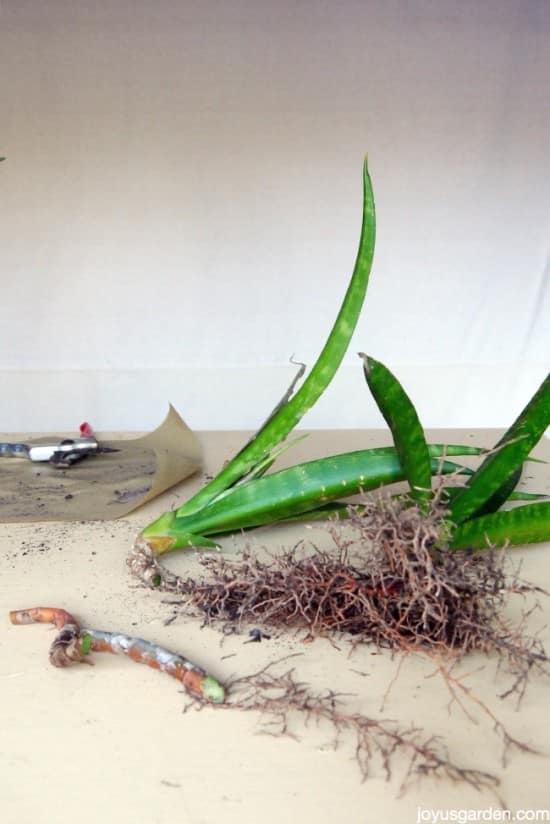
I took these out of my garden which you’ll see in the video. The cut rhizome is in the foreground. The plant on the left only has roots starting to swell at the bottom whereas the 1 on the right has roots already formed. These 2 were growing side by side but you never know with plants!
By Division
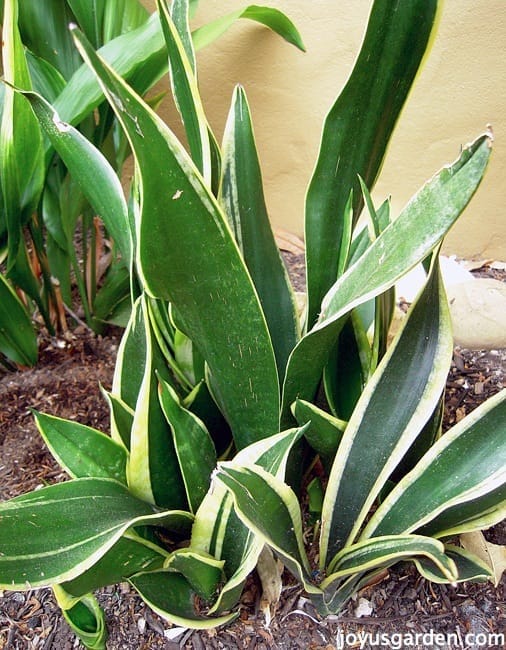
This is the plant in the video which I dug up and divided. It fell into pieces on it’s own but I’ve divided Sansevierias which have given me a much harder time. For those, I used a clean trowel, knife, pruners and/or a hand fork. How many plants you get of course depends on the size of the 1 that you’re dividing.
By the way, Sansevierias love to be potbound so don’t rush to divide it.
By Leaf Cuttings
For some reason we missed a picture of this 1 but you can clearly see it in the video. This isn’t my preferred method of propagation but it’s worth a mention. It’s not as easy, fast or successful as the other 2 mentioned above. It’s best done on the Sansevierias with solid leaf color because any variation (especially those margins) will be lost.
If you’re game to try it, once again make sure your knife is very clean and sharp. It’s also very important to plant those cut leaf sections in the direction that the leaf has been growing. You’ll see clearly se what I mean and the trick I use to make sure the proper end is planted in the video. If you don’t plant the right end, it won’t grow. By the way, it’s best to let the leaf sections heal off for a couple of days before you plant them.
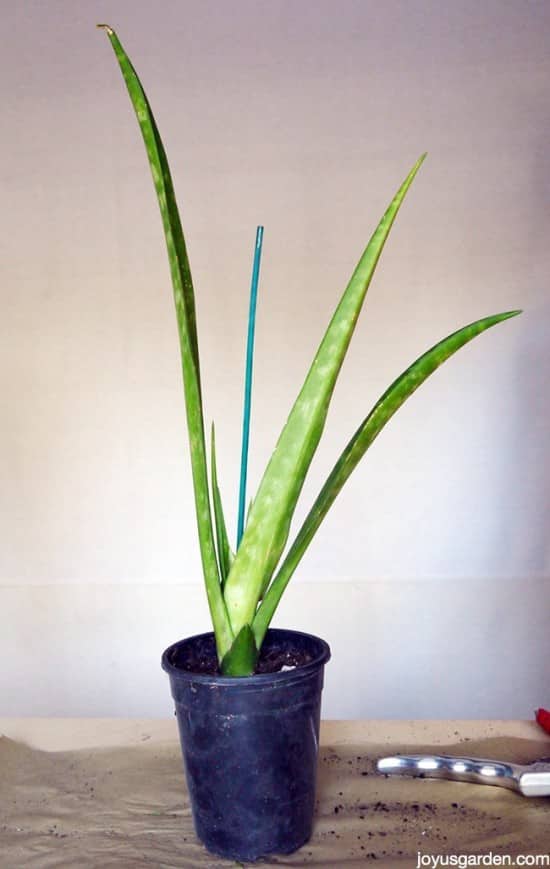
The plant was so heavy & the soil so light that I have to use a stake to get it to stay up straight!
Whatever method of propagation you choose, having more Sansevierias is a very good thing. I’m moving to a new home soon and can’t wait to get many more varieties of Snake Plants. They’re so easy to care for that there’s never too many!
Happy gardening,

YOU MAY ALSO ENJOY:
- Repotting Monstera Deliciosa
- How & Why I Clean Houseplants
- Monstera Deliciosa Care
- 7 Easy Care Floor Plants For Beginning Houseplant Gardeners
- 7 Easy Care Tabletop & Hanging Plants For Beginning Houseplant Gardeners
This post may contain affiliate links, you can read our policies here.

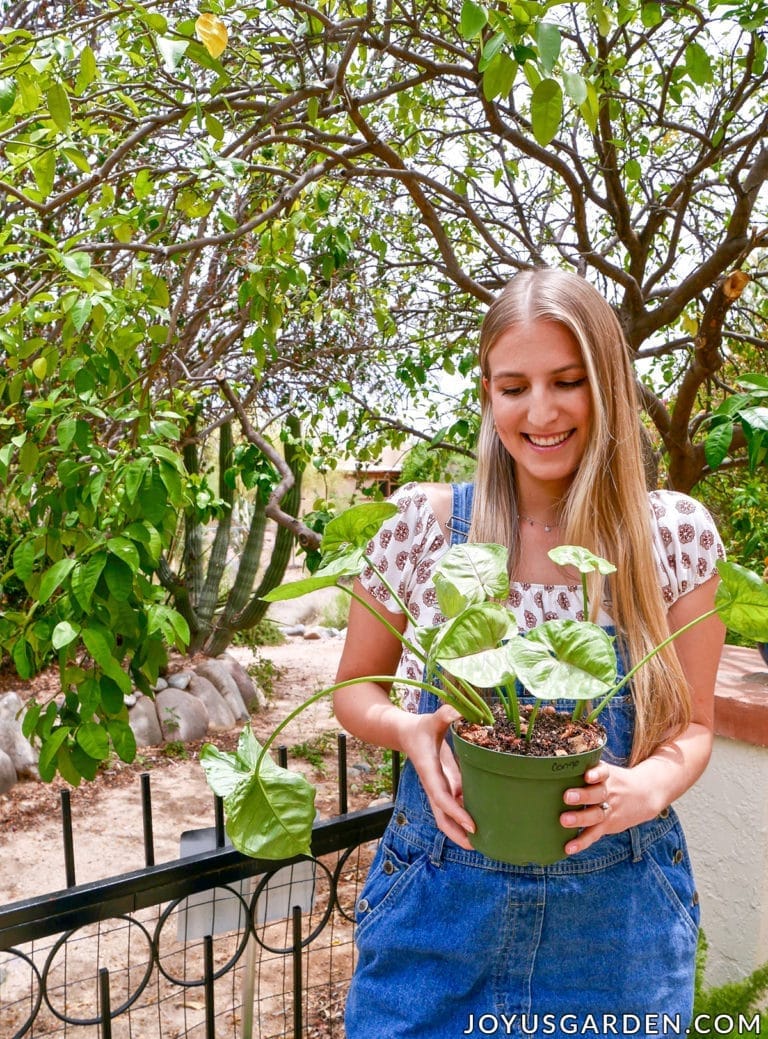

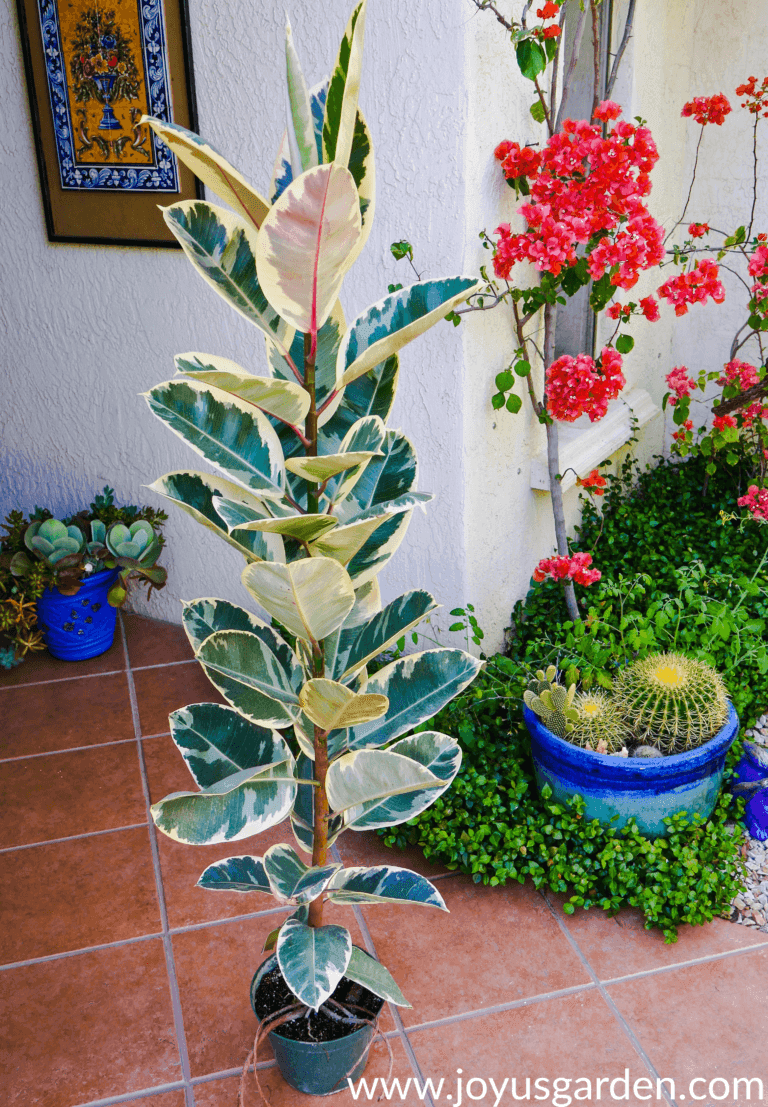
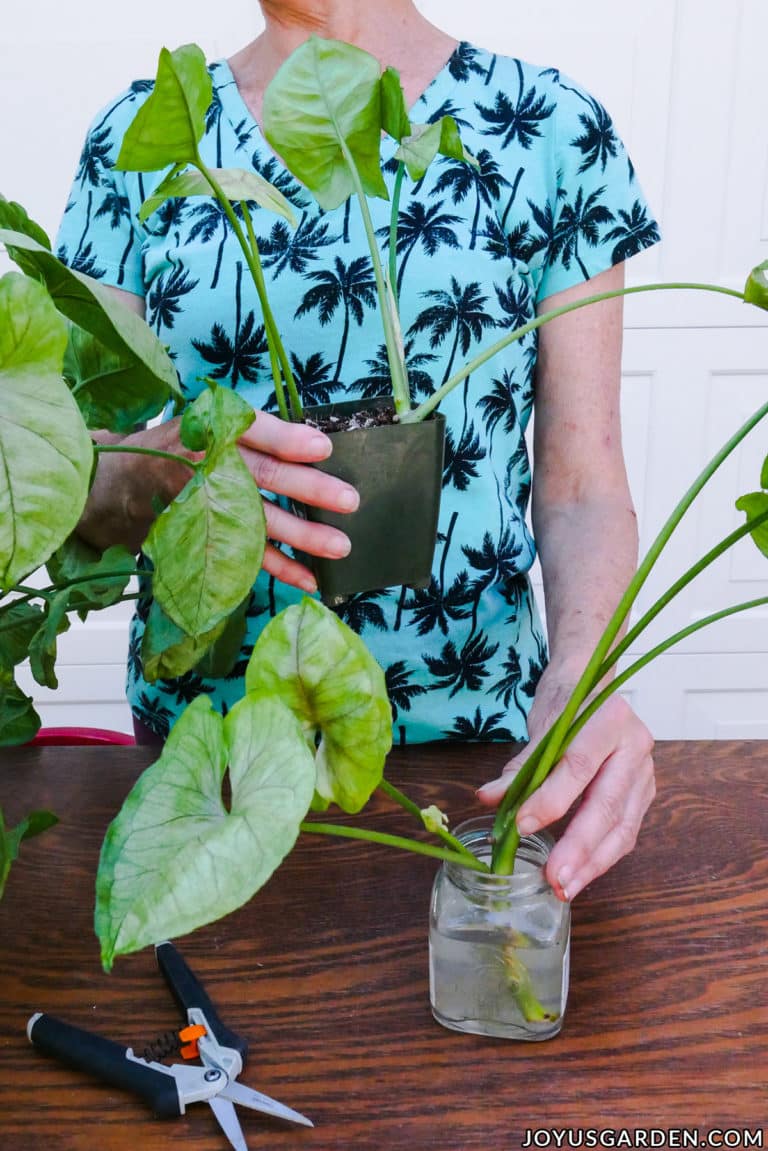

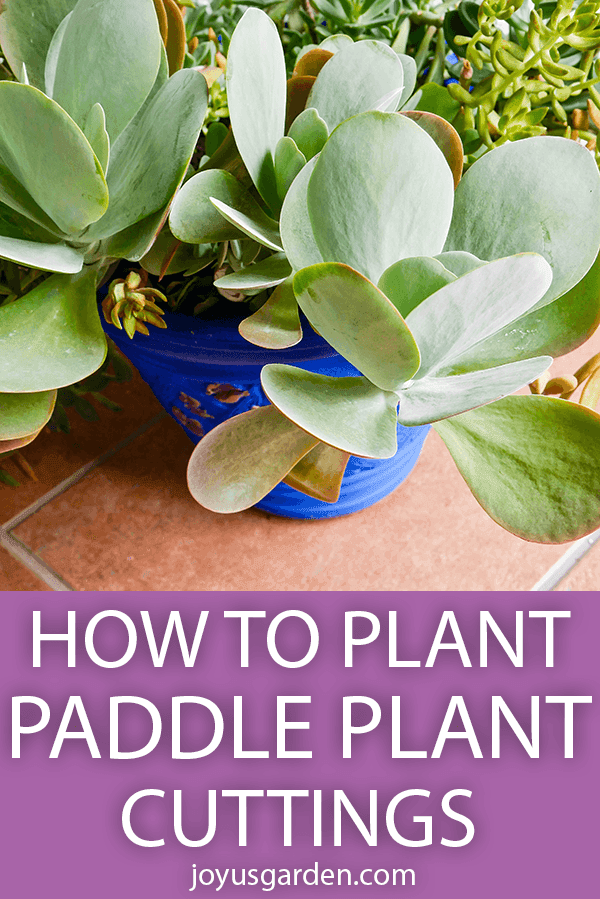

My Sansevieria blossomed and I planted the blossomes when they dried. I am getting seedlings. Has anyone tried this? If so, what were the results? I’m hoping for a new Sanseviera plant from seed.
I’ve never tried growing them from seed Peggy, but maybe someone has. From what I’ve heard, it’s a slow process. Nell
Pretty soon you run out of friends to give these cuttings to. People tend to hide when they see me coming, especially wioth a pot in my hand.
Too funny Dorlis! You’re right – even my UPS man is full up on succulent cuttings from my garden. Nell
Just about to buy some of those for our bedroom. Great video and the information clearly defines that you know your work. Thanks.
Thank you John. I recently moved to the Arizona desert & have 5 of them as houseplants. They don’t need any fussing & tolerate lower light just fine. Just be sure not to overwater them! Happy New Year, Nell
I found you because I evidently over watered, and it is winter. One clump of leaves fell over. So I was looking how to replant it. I will have to use the leaf cutting method. So this is new territory and I am excited to try it. I have three different sanseviera: one green, one stripped variegated and one stuckii. I hope I haven’t overwatered them all. .
Hi Suzanne – Sansevierias have thick roots which store a lot of water so they’re prone to over watering. In the winter you should always water your houseplants less because they’re resting. I recently moved to the Arizona desert & all my Snake Plants are loving it here! Nell
Great information. I just made some cuttings. Looking forward to see if they will give me some nice plants. I understand that those are very healthy for the house. We could all use that. Thanks Nell. 🙂
Thank you John! Yes, Snake Plants are champions when it comes to cleaning the air around them. I have several in my new home in the desert. So easy to care for in this warm, dry climate. Nell
Thanks much for this video! I just came home to my dark green variety totally fallen over out of its pot and I thought it was a goner! I will need to do the leaf cutting method to save it (I think it had a bit of root rot / was root bound). thanks!
You’re welcome Sarah! I’ve have 2 leaves fall off my S. laurentii (it needs to be repotted which I’m doing soon) within the past few months. The whole leaf roots too – & it’s easy to do. Nell
Hello! I bought my first snake plant about 6 months back. I have found that the original leaves haven’t gotten any taller but the couple shootings that came with it are skyrocketing and now almost twice as tall as the original leaves. So obviously I want to cut them back and I think I’ll try to place the cuttings into the same pot since there’s still plenty of space left. However I don’t want an eye sore of a level leaf instead of the cute points they get. Will points reform? Will the leaves I cut continue to grow after I cut them or will they now stay the same height like the original leaves that haven’t grown since I purchased the plant? Thank you!
Hi Stefanie – The cut part (on the top) will heal over & you’ll eventually see new shoots appear at the base. The cut part stays the same height. Nell
I’m having a little trouble with my snake plant. It is more than 15 years old, and it bloomed every year for me. I repotted early in 2016, separating and disposing of all but one stalk. Now that stalk is singular and it appears no others will sprout. It appears healthy enough. What to do to regain it’s fullness?
Hi Herb – Snake Plants do best when grow pot bound. It may have too much room. I’ve also found that they grow very slowly from a single stalk. Give it a little topdressing of compost & see if anything starts growing by the end of summer. Nell
Hi, I’ve had my mother in law’s tongue for a year now. Initially I overwatered them and most of the leaves have fallen off with rotten roots. I’ve cut them and chuck them in a vase with water. A few of them have grown roots but most of them haven’t grown any roots. The bottom tips are also quite brown. I’ve tried propagating them onto soil and all of them just slowly dried out and rot. Can someone please help. Thank you!
Rumpa x
Hi Rumpa – Snake Plants don’t like to be kept wet; they do best when kept on the dry side. I’ve never tried to propagate them in water (only be division or leaf cutting in a mix) but imagine it wouldn’t be successful. Sounds like you need to get a new plant – be careful not to over water it. Nell
I’m not sure I really understand the essential difference between the first two methods…. Essentially, you’re just dividing the roots up in both systems, aren’t you? So is it only different insofar as how close the plants are to each other?
Hi Francis – With the 1st method, the plant is growing in the ground & a single rhizome has spread which has sent up a single plant. I cut the rhizome apart from the mother plant & planted it. I wanted you to know that it can be propagated from a rhizome spreading & that it’ll grow into a full sized plant one day. The 2nd method is simply by dividing the plant in half or however many parts with a fork, trowel or shovel & transplanting it. Both are division but the methods are different. Nell
I had two pots of sansevieria plants that were grossly overcrowded – had not repotted in 10 years. Wanted to divide and share with others. I took them out of pots yesterday but was not able to repot them right away. I gathered all of them up and put them into a large bucket with water until I could pot them up.. Now I see this was not a good idea. What should I do with my plants until I can pot them up in two days?
Hi Mary – Sansevierias are extremely resilient. You can just leave them in the bucket without any water or wrapped in a towel or rag for a few days. Nell
Dear Nell. Please advise. I’m guessing the sansevierias I have growing inside in a pot are at least 100 YEARS OLD! They came from a very large window planter in the house of my mother-in-law, grew in my house for 45 years and moved with me. I got the big idea they needed a larger container- and this is where the trouble began. I may have planted them too deep and unfortunately they were placed in a bright, but this winter, very cold location. And duh, most certainly watered too much! They began turning yellow and falling out of the pot. Finally I read all your advice, “harvested” the healthy looking leaves and then I dug up as many rhizomes that I could. They are orange in color. Does that mean there’s no hope? I will start by trying to root leaf pieces. With the waiting period you recommend, could I also use rooting product? Without a doubt, these plants are the oldest things in my house. 🙁 Thank you so much. lynn
Hi Lynn – The roots of a sansevieria are usually orange; that’s normal. You can save them by planting the rhizomes or planting whats left of the healthy leaves. I don’t use rooting hormone & let the leaves heal over a few days. I’ve let them heal over for a longer period too. Stick them in succulent & cactus (not too deeply) & let them root. You may have to stake the leaves if they’re long. Nell
Hi,
Here in the UK I am absolutely in awe of the fact that these plants are grown outdoors in your country/countries. They would just never survive outside in our climate. However, I have very successfully grown a Mother-in-laws Tongue from a tiny leaf/shoot from a friends plant. I just broke the shoot off and planted it into soil.
It is now so huge and there are so many off shoots at the sides,that I am now ready to pot-on the tiny shoots and make more plants. My original plant is now about 4/5 years old.
Many good wishes for success with your own plants. Jena
Hi Jena – Yes, Snake Plants did well outside in Southern California. I now live in the Arizona desert where they do better indoors but still thrive none the less. Such tough, versatile plants! I’ve propagated them that way quite a few times also. Those taller leaves can get heavy & bend at the base. No worries, just cut them off & plant back in the pot! Nell
Hi I am trying to root my snake plant in alittle water or should I just put it in dirt not sure I am new at this new love for snake and plants in my home. Thanks.
Hi – I’ve never rooted a snake plant in water. What works the best for me is to let the leaf end heal over for at least a week & then plant it in mix. Sometimes I propagate them in a separate pot but often I put it back in the pot with the mother plant. Nell
Hello, do you know if I should put cinammon on the places where I cuted the rhizome on the snake plant and then let it heal?
And do you know if I should use root hormone on the snake plants, and if I should, do I put the root hormone when i just cut the rhizome and then let it heal over or let it heal over and then put the root hormone when i am going to plant it?
Thank you
Hi Eber – I’ve heard of cinnamon as a “home remedy” for purpose that but have never tried it. I don’t use rooting hormone – I just let it heal over. Nell
Variegation will not hold true if using leaf propagation. Only roots will keep the variegation
That’s true Andy. They do revert. Nell
Hi Nell, I absolutely love your site and how free and easy spirited you are when you teach us about plants. I bought a birds nest sansevieria about 4 months ago and it was doing great for awhile but I think I over watered it at some point and noticed it had root rot. I cut away all the roots and saved the good leaves and let them sit out for awhile and just potted them in soil according to your instructions today. Approximately how long do you think it will take for them to take root? Thanks for your help Nell.
Hi Mary – Thank you for your kind words! I’ve never timed that exactly, but roots should start appearing in 2-3 months. Spring is a great time for propagation. Nell